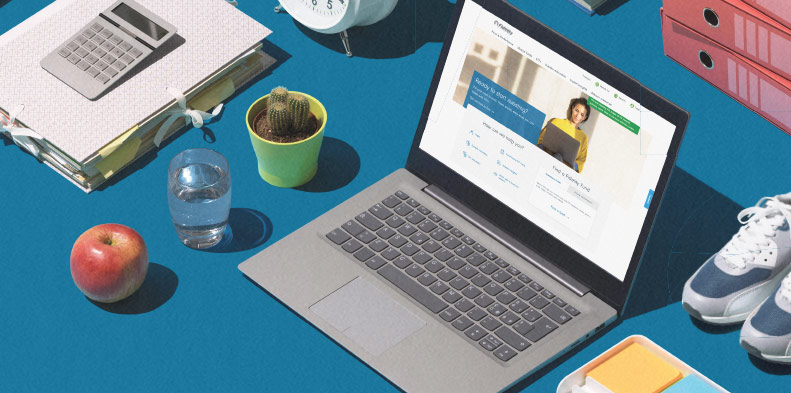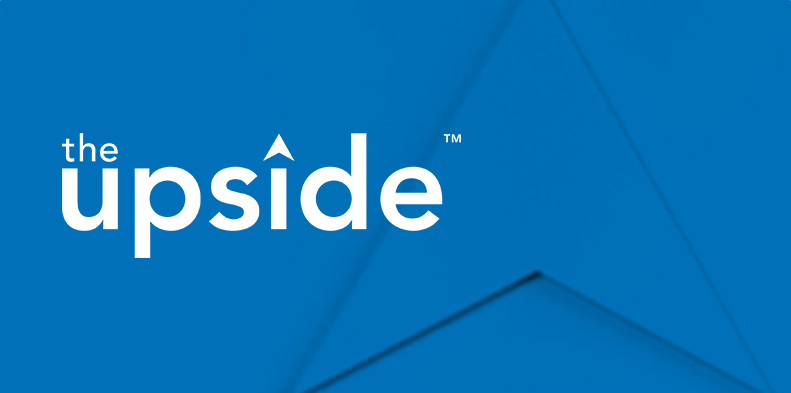How to get out of debt

While it's possible to go through life without dealing with debt, credit is something that just about every adult must learn to manage during their lifetime. Consider the major purchases. You'll need a mortgage to buy a house, and most new car buyers will finance their purchase with a car loan. Credit cards offer incredible convenience and the potential to earn rewards when you spend, but they can also lead to problems with debt if you're not careful.
What do you do when you max out your credit cards, and your debt has become more than you can handle? While getting out of debt is challenging, you can do it. Below are some steps you can take to make paying off debt a priority.
Good debt vs. Bad debt
You've probably heard of the terms "good debt" and "bad debt." For example, many people consider good debt to be the mortgage on your house or a student loan, while credit cards and other unsecured consumer loans are bad debt.
The bottom line is that no matter your income level, it's essential to live within your means to have the financial freedom to live life on your terms. But, unfortunately, it's never been more challenging. In our consumer-crazed society, the mass media tells us that life would be better if we only had the newest toy or the best experiences. The temptation to have it all now is real. Easy access to credit doesn't help.
Understanding debt-to-income ratios
One of the problems people have with debt is not knowing how much they can afford to carry. This is especially true when it comes to getting a mortgage or buying a new car.
Whenever you apply for credit, the lender will calculate your debt-to-income ratios, also known as debt servicing ratios, to determine your ability to pay the loan or mortgage. Unfortunately, many lenders are far too liberal with this measure, in part because they want to lend you money.
This is why it's crucial to understand how to calculate these ratios, because at the end of the day, only you know what you can afford once you factor in all of your living expenses.
Gross Debt Service ratio (GDS) and Total Debt Service ratio (TDS)
The two debt servicing ratios used by lenders are known as Gross Debt Service (GDS) and Total Debt Service (TDS). Here's a breakdown of how each one is calculated:
Gross Debt Service (GDS)
GDS is a measure of your monthly housing costs as a percentage of your gross monthly income. Most lenders set the maximum GDS at 32%. The idea here is that regardless of your income level, no more than 32% of your gross monthly income should be used to cover your housing costs (i.e., rent, or mortgage PIT).
How to calculate GDS
The GDS calculation is a simple one. For example, let's say your gross monthly income is $5000, and your total monthly mortgage payment (Principal + Interest + Property Taxes + Heating) is $1400.
$5000/$1400 = 28% GDS
Your GDS is 28%, less than the maximum of 32%. Therefore, if you were applying for a new mortgage with the same monthly income, your maximum mortgage payment would be $1600.
Total Debt Service (TDS)
TDS is a measure of all of your debts (housing costs plus any outstanding loans, lines of credit, and credit card balances) expressed as a percentage of your gross monthly income. In most cases, the maximum allowable TDS is 40%, although some lenders may make an exception depending upon the circumstances.
The rule of thumb is that as the payments on your debt exceed 40% of your income, your ability to live within your means becomes more and more complex, and the chances that you may not be able to service your debt increase.
How to calculate TDS
Building on the above example, let's say you also have a car loan payment of $250, in addition to your mortgage payment, and a line of credit payment of $75 per month.
Here's how you would calculate the TDS:
- Gross monthly income: $5000
- Mortgage payment: $1400
- Car loan: $450
- Line of credit $75
- Total monthly payments: $1925
- $5000/$1925 = 38.5% TDS
In this scenario, your TDS is in line, at 38.5%.
How much debt is affordable?
Everyone's situation is different, and a 32%/40% GDS/TDS might be more affordable for one person than the next. Here are some additional factors that can impact how much money you have leftover at the end of each month:
- Level of discretionary spending (travel, entertainment)
- Cost of living in your area
- Family size (number of children)
- Transportation costs (fuel, vehicle mileage, proximity to work)
- Medical expenses
- Grocery bill (types of foods you buy)
Just because a lender will let you borrow up to the maximum GDS/TDS ratios doesn't mean that it's affordable for you. For example, if a $400,000 house purchase will take you to 32% GDS, it doesn't mean you should buy a $400,000 house. An alternative would be to either buy a less expensive home to give yourself more breathing room or find a way to increase your income to improve affordability.
A few ways to get out of debt fast
Now that you understand some key concepts about debt and credit, here are 15 steps you can take today to start paying off your debt.
Monitor your credit report
When was the last time you checked your credit score? Do you know what debts are reporting to the credit bureau? More importantly, do you know the status of your credit report? Before you can create a plan to get out of debt, you need to handle what you owe. The best way to do this is by ordering a copy of your credit report. In Canada, there are two main credit bureaus – Equifax and TransUnion. Both companies will give you regular access to your credit report for a fee.
Instead of paying a premium for credit bureau reporting, you can join Borrowell or Credit Karma, and they will send an updated credit score and credit report to your email inbox every week, free of charge. With Borrowell, you'll get your Equifax report, and Credit Karma will send you your TransUnion report.
By getting regular credit bureau updates, you'll be able to see your credit score improve as you pay off your various debts. You'll also be able to keep an eye out for reporting errors that might be hurting your credit score and have them corrected quickly.
Build an emergency fund
I know what you're thinking. "But why would I focus on saving money when the idea is to pay off debt?" If you don't have an emergency fund, chances are you're relying on a high-interest credit card to pay for unexpected expenses that arise, like a car repair, or a surprise visit to the vet for your pet.
By establishing an emergency fund, you begin to break the debt cycle by creating the ability to pay with cash while you continue to pay off credit card debt. While many financial advisors will recommend that your emergency fund be enough to cover three months' worth of expenses or more, you can start small. Try to save $500. Once you reach your goal, aim for $1000.
Also, your emergency fund should be kept in a low-risk account. In other words, don't use it to buy crypto. Safety of principal is your number one objective.
Track your spending
Overspending is the cause of a lot of consumer debt. We often refer to it as "not living within our means", but it happens when we don't control our spending. If overspending is a problem, you should track your spending. First, find out where your money is going. When you review your bank account or credit card statements going back 90 days, you'll be amazed by the amount of money you're spending on non-essential items. For some, it's the daily Starbucks habit. For others, it's eating out or going to concerts or sporting events.
Tracking your spending can be scary at first, but it's easy to do. First, review your transactions going back 3-6 months to find out where your money is going. Then, download a budgeting app.
Create a budget
The very idea of creating a budget can be intimidating for anyone who struggles to manage their money. But a budget doesn't have to be scary. A budget is simply a plan for how you will spend your money. So, after you've figured out how you will track your spending, it's time to create a budget that you can follow each month.
Your budget will include the money you will pay towards your debt and all other spending. You can keep track of your budget the old-fashioned way, with pencil and paper, via a spreadsheet on your laptop, or by using a budgeting app on your mobile phone.
Tackle your high-interest debts first
There are two generally accepted methods for paying off debt. One is known as the "Debt Avalanche" method, and the other is the "Debt Snowball". With the debt avalanche method, you order your debts by interest rate, from highest to lowest. You then target the highest interest rate debt first. Once that's paid in full, you move on to the balance with the next highest interest rate. The idea is that getting rid of the highest interest rates will cost you less to pay off the debt in the long run.
Tackle your smallest balances first
Although the debt avalanche is probably the best debt payoff method purely from a dollar and cents standpoint, the debt snowball might be more effective when you factor in human emotion. With the debt snowball, your focus is to pay off the smallest debt first, then the next smallest, then the next – you get the picture.
With the debt snowball, you might end up paying more interest in the long run, but the good feelings caused by quickly knocking off the smallest debts can give you the emotional boost you need to see your debt payoff journey to the finish line. I've listed both debt payoff methods here. Of course, one approach isn't better than the other; it all depends on what works best for you.
Apply for a consolidation loan
If you have several high-interest debts, it might be in your best interest to obtain a consolidation loan. A consolidation loan lets you combine all of your debts into a single payment, usually at a better interest rate than what you're currently paying. Not only will you save on interest, but it's much easier to manage one loan payment than 5 or 6 credit card payments. The one caution about consolidation loans is that they only work if you can avoid the temptation to rack up your credit cards after you pay them off.
This is why many loan companies will require you to close your credit card accounts, or at the very least, lower the limits on your credit cards and any other revolving credit products.
Ask for a raise
Perhaps you're happy in your current role, or a promotion simply isn't available. In that case, you could ask your boss for a raise. But, unfortunately, there is an absence of good talent in the marketplace, and if you are a valued contributor at your company, they will do their best to keep you, even if that means paying you more money now and then.
A modest raise puts more money in your pocket that you can use to pay off credit card debt or a consolidation loan. However, if you do get a raise, make sure you avoid the lifestyle inflation trap. That is, as your income grows, so does your spending level. Lifestyle inflation has many high-income earners stuck in neutral when it comes to their debt levels.
Start a side hustle
A side hustle refers to employment that you undertake over and above your full-time job. While some might consider a second part-time job to be a side hustle, it usually refers to your own business that you start on the side. For example, if you're looking for ways to make more money to pay off credit cards or a personal loan, consider creating a side hustle.
If you have a skill of any kind, people will pay you. It could be teaching music or English. If you love to write, you could make money as a freelance writer. Even if you can't think of a specific skill, you could provide any number of services to people in your community: lawn care, house sitting, dog-walking and moving furniture, to name a few.
Speak with a credit counsellor
Depending on your situation, your debt levels may be too high for you to manage independently. If you feel as though you've exhausted your options, you may want to consider speaking with a licensed credit counselor. A credit counselor can help you create a budget, make payment arrangements with various creditors. They'll also be able to advise you on more extreme measures, such as consumer proposals or bankruptcy.
Final thoughts
Whether you're struggling with a small amount of credit card debt or your lifestyle is far more expensive than you can afford, it's never too late to start your debt pay-off journey. Remember that it is a journey, and it will take time. If you need help, don't be afraid to reach out to a financial professional or someone you trust who can help you make the right decisions.
This article was written by Tom Drake from MapleMoney and was legally licensed through the Industry Dive publisher network. Please direct all licensing questions to legal@industrydive.com. ![]()


